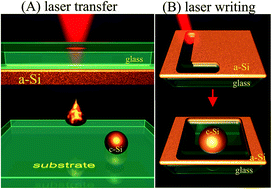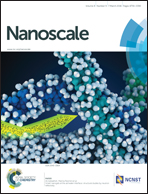Laser fabrication of crystalline silicon nanoresonators from an amorphous film for low-loss all-dielectric nanophotonics
Abstract
The concept of high refractive index subwavelength dielectric nanoresonators, supporting electric and magnetic optical resonance, is a promising platform for waveguiding, sensing, and nonlinear nanophotonic devices. However, high concentration of defects in the nanoresonators diminishes their resonant properties, which are crucially dependent on their internal losses. Therefore, it seems to be inevitable to use initially crystalline materials for fabrication of the nanoresonators. Here, we show that the fabrication of crystalline (low-loss) resonant silicon nanoparticles by femtosecond laser ablation of amorphous (high-loss) silicon thin films is possible. We apply two conceptually different approaches: recently proposed laser-induced transfer and a novel laser writing technique for large-scale fabrication of the crystalline nanoparticles. The crystallinity of the fabricated nanoparticles is proven by Raman spectroscopy and electron transmission microscopy, whereas optical resonant properties of the nanoparticles are studied using dark-field optical spectroscopy and full-wave electromagnetic simulations.

- This article is part of the themed collection: Editor’s Choice: Making sense of nanosensors and devices

 Please wait while we load your content...
Please wait while we load your content...